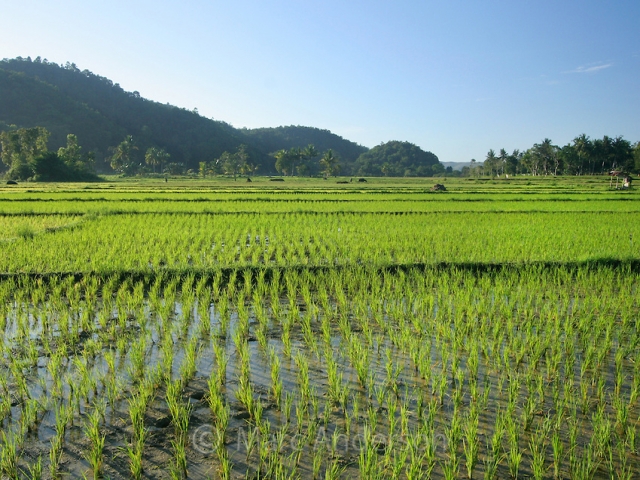Cambodian Rice Business Opportunity

 Cambodia was once a rice exporter country just before the civil war took place in 1975 and now it is closing gap again and in few years it will become one of the top players in South East Asia countries. To achieve this goal, the government is doing whatever it can to lift this industry up and running. Agriculture is one Cambodia’s four main economic pillars. Road networks, irrigation/transportation system, advanced technology, market access and expansion, tax incentive etc. are being working out and implemented.
Cambodia was once a rice exporter country just before the civil war took place in 1975 and now it is closing gap again and in few years it will become one of the top players in South East Asia countries. To achieve this goal, the government is doing whatever it can to lift this industry up and running. Agriculture is one Cambodia’s four main economic pillars. Road networks, irrigation/transportation system, advanced technology, market access and expansion, tax incentive etc. are being working out and implemented.
 World population is growing rapidly and more and more farm lands are being switched to other uses thus rice which is one of human staples is presently a hot commodity but in fact it has been in the past and will be in the future.
World population is growing rapidly and more and more farm lands are being switched to other uses thus rice which is one of human staples is presently a hot commodity but in fact it has been in the past and will be in the future.
Not all lands in Cambodia are suitable for rice cultivating. If you think of acquiring land for rice farming in order to export, think of provinces Battambang, Banteay Meanchey, Siem Reap, Kampong Thom, Pursat, Prey Veng, Takeo and Svay Rieng. These are provinces that you ought to put your sights on.
 For rice farms that are near water reservoir and/or near irrigation system, you basically can farm three times per year but if you depend on nature then it is no luck, we can only harvest once a year.
For rice farms that are near water reservoir and/or near irrigation system, you basically can farm three times per year but if you depend on nature then it is no luck, we can only harvest once a year.
Other good businesses in this industry:
- Rice Processing Facility with capacity to produce for export quality
- Capital fund and warehouse - Buy low during harvest and sell high at later date
- Exporting Cambodia’s surplus rice to other countries
 For paddy rice that can cultivate three times per year will produce more output while its price and quality are still competitive to the paddy rice that produces once a year.
For paddy rice that can cultivate three times per year will produce more output while its price and quality are still competitive to the paddy rice that produces once a year.
- 3 tons per hectare for paddy rice that can produce once a year
- 6 tons per hectare for paddy rice that can produce two to three times per year
- $360 average price per ton for all types for all seasons
|
One time per year paddy rice |
Two times per year paddy rice |
Three times per year paddy rice |
||||
|
# of Ht |
Income per ht |
Return after all expenses |
Income per ht |
Return after all expenses |
Income per ht |
Return after all expenses |
| 1 | $700 | 350 | 2800 | 2,100 | 4,200 | 3,150 |
| 10 | $7,000 | 3,500 | 28,000 | 21,000 | 42,000 | 31,500 |
| 20 | $14,000 | 7,000 | 56,000 | 42,000 | 84,000 | 63,000 |
| 30 | $21,000 | 10,500 | 84,000 | 258,300 | 126,000 | 94,500 |
| 50 | $35,000 | 17,500 | 140,000 | 105,000 | 210,000 | 157,500 |
| 100 | $70,000 | 35,000 | 280,000 | 210,000 | 420,000 | 315,000 |
Formula (Approximate):
$700 = $360 x 3 tons x 65% x 1 time
$2,800 = $360 x 6 tons x 65% x 2 times
$4,200 = $360 x 6 tons x 65% x 3 times
Expenses are roughly $350 per hectare per time:
Plowing : $80 = $40 x 2 times
: $20 = $20 x 1 time (smoothen dirt)
Seeding : $50
Fertilizer : $100
Harvest : $100
2012 Cambodia Rice Statistic:
Paddy rice collected : 9.31 million tons collected
Production
: 3.17 tons per hectare
: 2.48 million hectares harvested during rainy season
: 480,000 hectares harvest during dried season
Other
: 1.21 million tons reserved for seeding, animal feeds, loss during harvest
: 8.1 million tons for milling
: Percentage from paddy rice to rice is 64%
Government goal: 1 million ton of rice to export by 2015
Agricultural Land acquisition and price:
Agriculture land prices in Cambodia differ greatly in respect to location, remoteness, accessibility, fertilization, suitability, etc. but one can expect its cost from few to greater than ten thousands of dollars per hectare.
Land Concession - Government no longer gives out concession nowadays therefore one needs to find out existing license holders who could not perform the whole lot then work out an arrangement with them.
